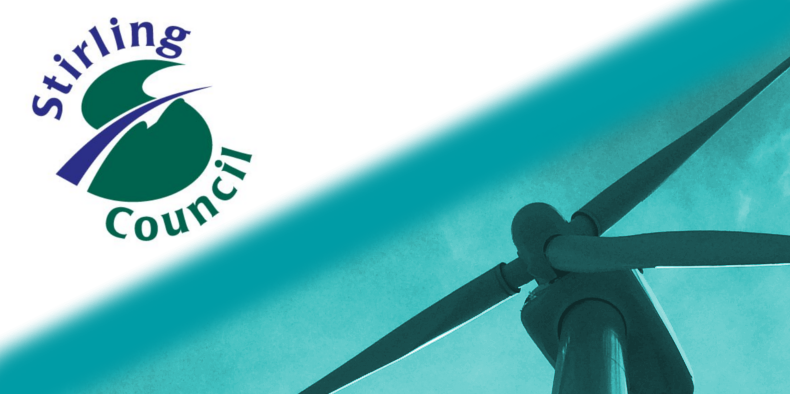CALL US: 0141 212 1322

Stirling Council: Renewable Energy Strategy
Project Overview
As a Local Authority Stirling Council have responsibility for not only a large number of buildings, but buildings with a range of uses. Managing and maintaining a range of facilities provides funding challenges for all landlords and Stirling Council are no exception. This is even more challenging when Local Authorities in Scotland and across the UK are facing budget cuts.
The Accounts Commission said funding from the Scottish government to Council's fell by 2.3% in real terms in 2017-2018.
In order to address rising energy costs and gain control of their energy production Stirling Council have installed solar panels and biomass boilers at a number of properties including schools and offices. As part of the strategy to further reduce running costs Cogeo were brought in to support the Council in identifying sites suitable for wind turbines.

-
Approach & solutions
Using years of development and consultancy experience in wind energy developments, the Cogeo team assessed 15 sites considering the main planning and environmental constraints for each location.
Utilising our extensive GIS datasets assessments were made on the potential impacts on planning policy, ecology , landscape & visual, heritage and noise. This was further analysed against operational constraints such as wind speed and grid connection capacity to select the sites with greatest potential.
Our detailed surveys revealed three sites to have the greatest opportunity for turbine development. One of the sites, Polmaise Waste Centre, was considered suitable for two separate developments due to the amount of electricity being consumed onsite as well as the large land holding. The other site identified was Balfron High School which serves as a resource for the wider community as well as an education centre.
Polmaise proved an interesting challenge as planning guidance for the area recommended turbines should be no taller than 20m, whereas our analysis had highlighted that turbines of 25m would be more suited to the energy use at the site.
Our role was to concentrate the assessment on the impact for our specific proposal rather than looking at guidance for the wider area. Sitting in a flat, rural landscape, Polmaise is the exception as an industrial unit within wider farmland. This meant that the buildings and structures of the recycling centre were of a larger scale than those of the general landscape.
Taking a proactive approach to engaging the Local Planning Authority, Cogeo's Landscape Team produced a range of visualisations from key receptors, which presented the project as constructed using a number of different turbine models.
The same approach was taken at Balfron High School, where the main constraint was the proximity of the village to the development.
Both sites were taken through a formal pre-application process and EIA Screening Opinion where further analysis was conducted including noise modelling, ecological impact surveys and shadow flicker assessment.
Outcome
Despite guidance recommending turbine heights of only 20m, Cogeo's Planning Team demonstrated the site specific impacts and negotiated support for the 25m tip height at Polmaise Recycling Centre from the Local Planning Authority.
Further to the success at Polmaise, our extensive pre-application work also gained support for a two turbine development at Balfron High School.
Demonstrating the site specific impacts of a project was key to gaining Local Planning Authority support for these projects. Whilst these aren't the biggest turbines, the high sensitivity of the sites meant that the only way to develop a successful project was with detailed design work; something we advocate for all the projects we are involved in. We believe that if you understand the challenge at the start of a project, you can design the solutions in a way that saves time and money.
